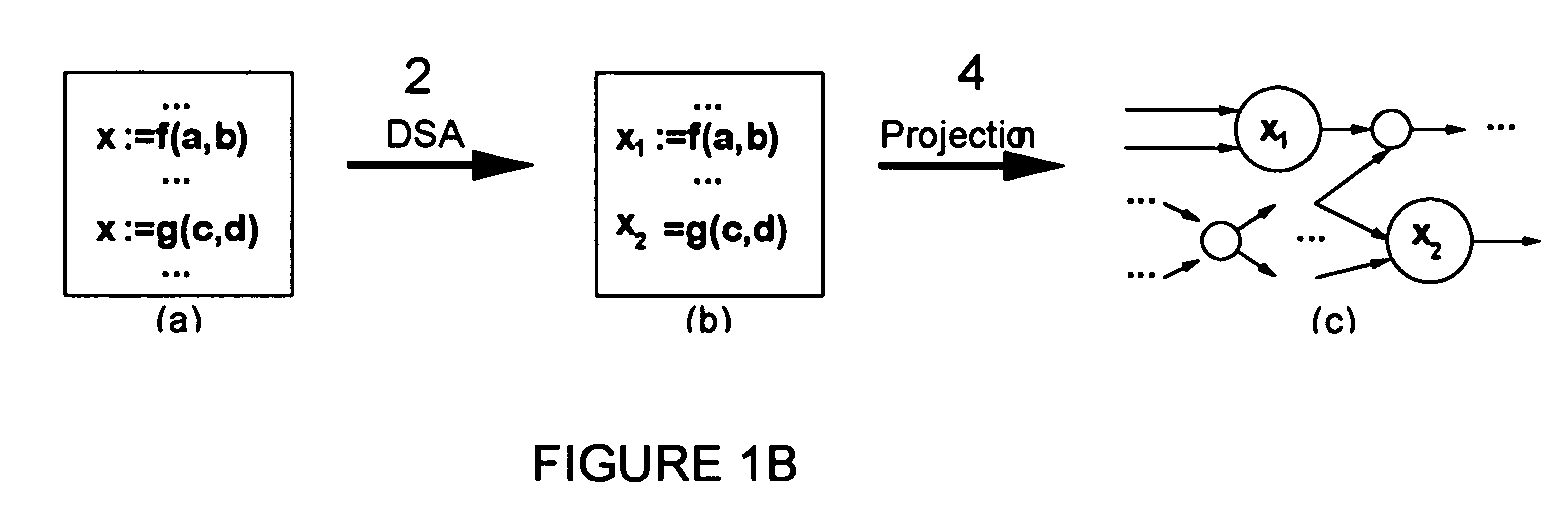Method for the synthesis of VLSI systems based on data-driven decomposition
a data-driven decomposition and synthesis technology, applied in the field of vlsi (very large scale integration) circuit design, can solve the problems of abandoning syntax-directed approach, many chip designers are deterred from taking advantage of these qualities, and many transistors are complex and highly concurrent, so as to reduce forward latency, improve energy and performance, and reduce energy consumption
- Summary
- Abstract
- Description
- Claims
- Application Information
AI Technical Summary
Benefits of technology
Problems solved by technology
Method used
Image
Examples
Embodiment Construction
[0044]The present invention relates to the field of VLSI circuit design, and in particular to a method for VLSI synthesis based on data-driven decomposition (DDD). Embodiments of the present invention comprise of methods that aid the design of VLSI circuit by formalizing and automating decomposition based on data dependencies.
[0045]In the present invention, the basic units of decomposition are assignments to a variable (whether through a communication with another process or an actual assignment statement). The goal is to give every variable in the source process its own target process that implements all assignments to that variable. These target processes mostly conform to a basic template. To keep the target processes simple enough for future synthesis, the decomposition method must control the number of assignments to each variable in the source process.
[0046]One decomposition method embodiment is comprised of three stages. First, the source process is converted into Dynamic Sin...
PUM
 Login to View More
Login to View More Abstract
Description
Claims
Application Information
 Login to View More
Login to View More - R&D
- Intellectual Property
- Life Sciences
- Materials
- Tech Scout
- Unparalleled Data Quality
- Higher Quality Content
- 60% Fewer Hallucinations
Browse by: Latest US Patents, China's latest patents, Technical Efficacy Thesaurus, Application Domain, Technology Topic, Popular Technical Reports.
© 2025 PatSnap. All rights reserved.Legal|Privacy policy|Modern Slavery Act Transparency Statement|Sitemap|About US| Contact US: help@patsnap.com



